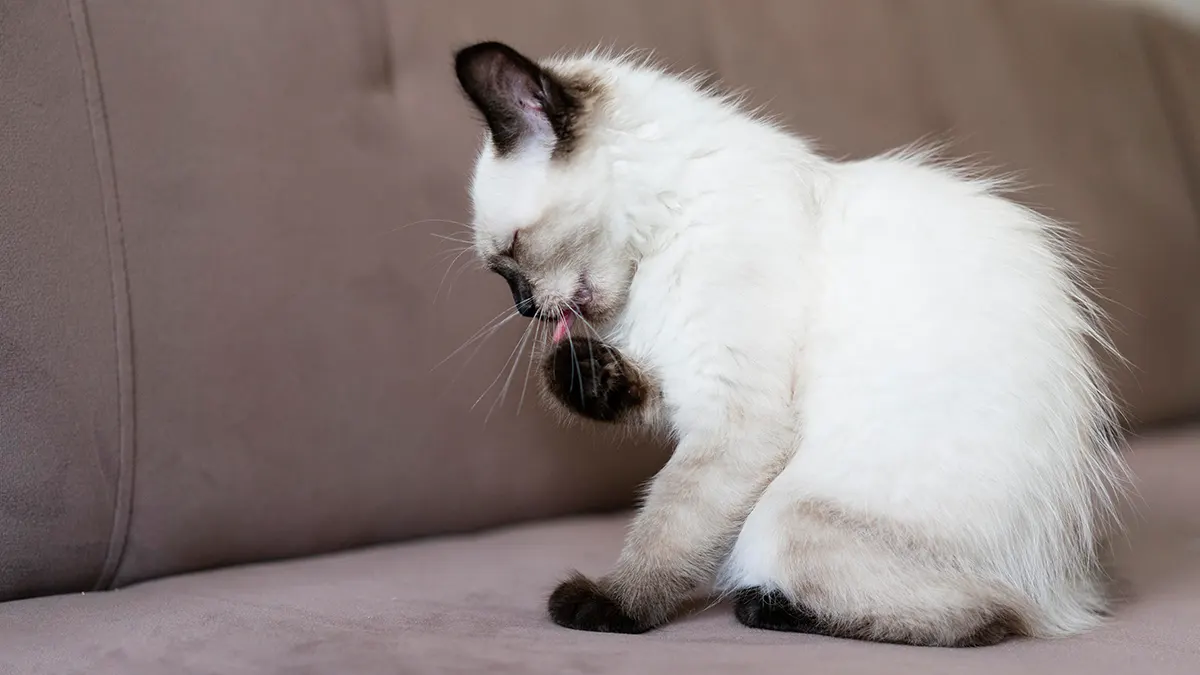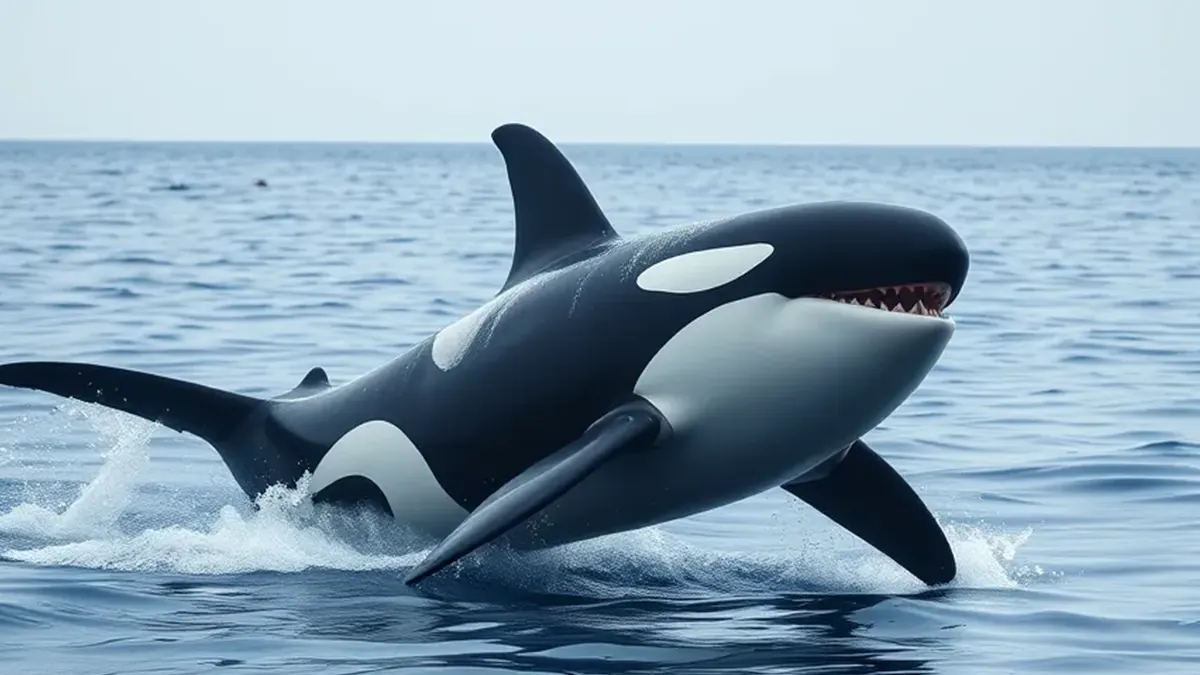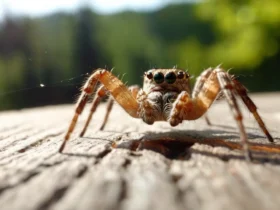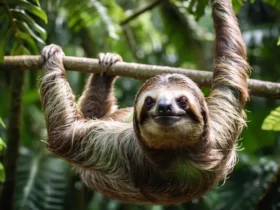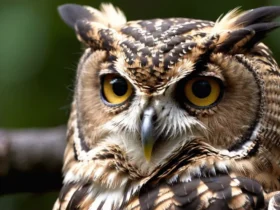Smooth animals are a fascinating group that include some of the most unusual creatures on Earth. With their slick, scaleless skin and snake-like bodies, these animals glide stealthily through their environments.
If you’re short on time, here’s a quick answer to your question: Smooth animals include groups like caecilians, naked mole rats, and glass frogs that all lack scales and fur.
In this comprehensive guide, we’ll uncover what exactly makes an animal ‘smooth,’ explore some of the most intriguing smooth species, and dive into their evolutionary origins and biological adaptations that allow them to survive without the usual mammalian or reptilian coverings.
Read on to learn all about these slick skinned wonders of nature.
What Makes an Animal Smooth?
Lack of Scales or Fur
One of the defining characteristics of a smooth animal is the lack of external scales, feathers, or fur covering its skin. This exposes the animal’s moist, glandular epidermis and creates a slick, frictionless surface.
Species like dolphins, whales, seals, manatees, and naked mole rats evolved smooth, hairless skin to improve their hydrodynamic and thermoregulatory capabilities in aquatic environments. Their sleek bodies allow them to swim and dive efficiently.
Amphibians like frogs and salamanders also have smooth, scaleless skin that reduces drag in water and allows cutaneous respiration.
Moist, Glandular Skin
Smooth animals possess skin packed with mucus and oil-secreting glands that keep their skin perpetually moist and slippery. Aquatic mammals like hippos, dolphins, and whales have subcutaneous fat layers that waterproof their skin.
Their smooth dermal layer also prevents abrasions despite constant exposure to water. Species like frogs and caecilians have mucus glands spread over their skins to keep them slimy and slick. This helpful adaptation allows them to slide effortlessly through vegetation and narrow crevices.
Some burrowing animals like moles and naked mole rats maintain moist, glandular skin to squeeze through underground tunnels. Their skin secretions also help them thermoregulate in humid subterranean environments.
Legless or Reduced Limbs
Having a limbless, serpentine body contributes to an animal’s smooth, streamlined physique. Legless species like snakes and caecilians have elongated, cylindrical bodies that let them stealthily maneuver through their environments.
According to a 2010 study, over 25% of amphibian species today completely lack or have significantly reduced limbs. Their undulating, fluid movements and lack of protruding appendages optimizes their ability to squeeze into narrow gaps and reduces friction.
Other animals like seals, whales, and dolphins have flippers in place of legs to propel themselves smoothly through water. Their finned tails further enhance their hydrodynamic capabilities.
Famous Examples of Smooth Animals
Glass Frogs
Glass frogs are a group of amphibians that have see-through skin on their undersides, allowing their internal organs to be visible (source). There are around 150 known species of these unique frogs found in the tropical forests of Central and South America.
Some distinguishing features beyond their see-through abdominal skin include large eyes, expanded finger and toe tips, and small suction pads on their toes. While the transparency of glass frogs aids them in camouflage, some species also have bright colors on their backs or legs when viewed from above.
Caecilians
Caecilians are a lesser-known group of limbless amphibians that live underground, resembling earthworms or snakes. There are over 200 species found primarily in the tropics of South America, Africa, and Southern Asia (source).
They have slimy skin without scales, bones or spines to help them move through soil and mud. Little is known about these elusive burrowing creatures as they spend the majority of their lives hidden underground.
Some observations indicate they may feed on plant matter and small insects when underground.
Naked Mole Rats
Naked mole rats are unusual burrowing rodents native to East Africa that live in underground colonies like ants or termites. They have hairless skin and almost look like wrinkly mini-sausages with large buck teeth protruding from a narrow jaw.
Naked mole rats are well adapted for their fully subterranean life with small eyes and ears and sensory hairs spread across their bodies to navigate tunnels (source). Colonies have complex social structures with a breeding female queen.
They are also unusually long-lived for such small rodents with lifespans over 30 years.
Slender Blindsnakes
The slender blindsnake is a harmless species of snake measuring only 4-6 inches as adults. They live underground burrows across much of southeastern United States. True to their name, slender blindsnakes have vestigial eyes covered by large scales with poor vision and get around primarily by scent (source).
Their skin lacks scales and has a smooth, polished appearance. Slender blindsnakes feed on ant and termite larvae digging underground. Females lay 1-4 eggs per year. Their small size and underground lifestyle makes them rarely encountered by humans.
Evolutionary Adaptations
Burrowing Abilities
Many smooth animals like snakes, worms, and legless lizards have evolved excellent burrowing abilities to move underground and navigate tight spaces (1). Their smooth, scaleless skin and elongated bodies allow them to slide easily through the soil.
Species like blind snakes have shovel-like heads perfect for digging, while others have tough scales on their heads to protect them as they burrow (2). Burrowing helps these animals avoid predators, regulate body temperature, and locate food sources like invertebrates or rodents underground.
These remarkable evolutionary adaptations make smooth animals expert excavators able to thrive in subterranean environments.
Lack of Scales Allows Flexibility
The lack of scales gives smooth animals great flexibility for squeezing into tight spaces (3). Species like snakes can expand their jaw over 100 times wider than normal to swallow large prey whole (4). Their scaleless skin stretches to accommodate bulky meals.
Legless lizards like glass lizards can also drop their tails if attacked, thanks to highly flexible connective tissue between vertebrae. Losing scales has literally allowed these species to bend over backwards to survive!
Overall, the increased pliability and elasticity from a lack of scales provides a useful evolutionary advantage.
Camouflage in Leaf Litter
Scales reflect light, so a smooth, scaleless body aids camouflage (5). Many smooth reptiles and amphibians rely on their ability to blend into leaf litter on the forest floor. Species like the northern worm snake have brown or red backs to mimic dead leaves, masking them from visual predators like birds (6).
Smooth greensnakes have vibrant green skin with yellow bellies to disappear seamlessly among foliage. Other scaleless species camouflage themselves by burrowing into soil and essentially vanishing from threats. Smooth skin has proven an evolutionary asset for concealment for these animals.
Reduced Energy Needs
Lacking scales also benefits smooth cold-blooded animals by allowing greater absorption of external heat from the environment (7). Species like glass lizards and caecilians don’t expend as much energy regulating their internal body temperature thanks to their naked, moist skin.
Caecilians and some worm lizards even have fewer skull bones likely to facilitate heat transfer underground (8). Having no scales also means that animals don’t spend energy growing them as they age or regenerating them after injury.
Overall, losing scales and the associated energy costs may have conferred an evolutionary edge to smooth animals in their niches.
Unique Characteristics
Transparent Skin
Some smooth animals like glass frogs have transparent or translucent skin which allows their internal organs to be seen. This unique adaption helps them camouflage against predators as their transparent skin blends into the environment.
According to Animal Diversity Web, the combination of transparent skin and green bones allows glass frogs to appear as plant leaves to predators.
Heat Sensing Pores
Certain smooth animals like pythons and boas have heat sensing pores on their upper and lower jaws which detect infrared radiation from warm-blooded prey sources. As described on National Geographic, these heat sensors allow snakes to precisely strike prey during darkness or when vision is obstructed.
Sticky Skin for Climbing
Some tree frogs have sticky toe pads which allow them to climb vertical and inverted surfaces with ease. According to Ask A Biologist, the toe pads contain specialized glands that secrete mucus, allowing the frogs to grip onto the surface while climbing.
The combination of mucus and microscopic channels in the toe pads result in strong surface tension and adhesion forces between the frog’s feet and the climbing surface.
Toxic Skin Secretions
Smooth animals like poison dart frogs secrete extremely toxic substances through their skin as a defense mechanism. As noted on Rainforest Cruises, while the frogs themselves are immune to the poison, the toxins can be fatal to predators trying to eat them.
Primitive tribes in the rainforest have historically used the frog’s skin secretions to coat blowdarts for hunting, hence their name.
Ecological Roles
Filling Niches in Tropical Rainforests
Smooth animals like snakes, snails, frogs, and salamanders inhabit a variety of niches in the complex ecosystems of tropical rainforests. Their smooth, moist skin allows them to thrive in warm, humid environments.
Some species are arboreal, living in treetops and vines, while others dwell on the dark forest floor. Smooth amphibians and reptiles serve key roles as both hunters and prey in the rainforest food web.
Preying on Insects and Small Invertebrates
Many smooth animals are carnivores that feast on small invertebrates like insects, worms, and snails. Skilled predators like the green tree python use camouflage to ambush passing prey, while tiny poison dart frogs generate toxins to deter would-be attackers.
With specialized hunting techniques, these animals help regulate invertebrate populations in tropical ecosystems.
Serving as Prey for Predators
While smooth creatures prey on smaller animals, they also inevitably serve as meals for larger predators. Birds like hawks and eagles snatch up skinks and frogs from rainforest floors. Mammalian hunters such as wild cats and monkeys consume protein-rich amphibian eggs with relish.
And the mighty anaconda snake is a master hunter of smooth animals ranging from rodents to jaguars. So while graceful in motion, smooth animals provide essential calories for a wide array of jungle predators.
Aiding in Seed Dispersal and Pollination
According to conservation organizations like the World Land Trust, smooth herpetofauna and gastropods support plant biodiversity in vital ways. As fruigivores, fruit-eating snakes help disperse the seeds of tropical plants through defecation in new locations.
Beetles, moths, and other invertebrates are key pollinators for orchids and bromeliads. And nitrogen-rich amphibian waste fertilizes rainforest soils. So while unassuming in nature, smooth animals’ movements and waste help propogate the awe-inspiring diversity of plant life under the jungle canopy.
Conclusion
Smooth animals comprise an assortment of creatures that have convergently evolved reduced coverings and flattened bodies to suit fossorial or aquatic lifestyles. By examining their evolutionary origins, unique adaptations, and ecological roles, we gain insight into how diverse species solve the challenges of survival in creative ways.
These slippery reptiles, amphibians, and mammals may appear simple or primitive, but smooth animals remain marvels of nature worthy of appreciation and study. Their legless forms and naked skin allow them to silently traverse their subterranean and arboreal habitats, demonstrating that scales and fur are not prerequisites for thriving in the animal kingdom.


